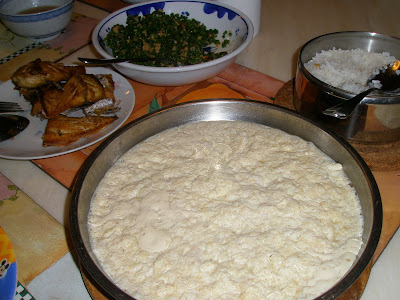I am sure many of you have never seen or heard of kombu. Kombu (pronounced as khuan poa in Cantonese) is a type of seaweed that is cultivated in Japan. Kombu is available fresh, dried, pickled, and frozen in many Asian markets. It is sweet and it is used mainly to flavour broth, soups and sauces. My mil would never fail to buy packets of dried kombu whenever she goes to Japan. She has 2 ways of preparing the kombu. One is to boil it with lean pork to prepare soup and the other way is to make kombu salad, ala Japanese. The kombu salad is really delicious and no cooking is required. When she returns from HK, I will ask her to whip up a kombu salad for dinner.
Here’s the double boiled kombu soup with lean pork.

When I was shopping at Jaya Jusco several days ago, I saw a booth promoting kombu from Korea. I bought a packet for my mum. My mum has goitre and kombu, which is rich in iodine is good for goitre patients.
Health benefits of Kombu
Kombu seaweed is a very nutritious food and is high in protein, calcium, iodine, magnesium, iron and folate.
i) Reduces risk of cancer
Lower rates of breast cancers have been reported in Japanese women eating a diet high in kelp. It is claimed that Lignans, which help to fight cancer are found in high quantity in kelp and may provide protection against certain cancers.
ii) Good for Iodine deficient individuals
Seaweed can be treated as an energy booster in those who are iodine deficient and have underactive thyroids.
How to select and store
Very often you will notice a fine white film which appears on the surface of kombu. This is entirely normal and is not harmful. You just need to wipe the sheets of kombu with a damp cloth or wash it before use. Pickled kombu can be stored for long periods under refrigeration but it need to be finished within short period of time once opened.
















